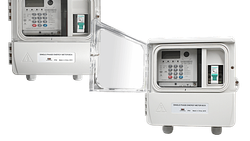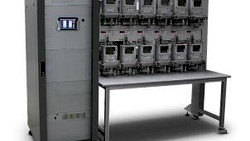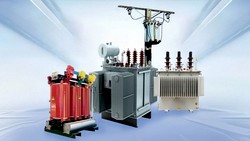Smart meters have become vital for modern utilities. They help manage energy distribution, track usage, and keep grids stable. But as networks grow more complex, compatibility between different systems remains a tough problem. Without it, utilities face scattered data, higher costs, and delays in new services.
Many utilities use a mix of old and new meters from different makers. Each uses its own communication methods. This creates messy data collection and integration problems. Engineers waste time fixing mismatched connections. Managers struggle with vendor lock-in and costly upgrades. As grids add more solar panels and electric cars, smooth compatibility becomes even more important for real-time data sharing and efficiency.
Fixing these gaps isn't just about technology. It's about building strong systems that support long-term energy goals. Let's look at where we stand and how the industry can move forward.
Current Situation: Where We Stand
Smart meter compatibility today is patchy. Regional standards, old systems, and changing protocols all play a part. Europe and Asia use DLMS/COSEM for device communication, standardized by IEC 62056. North America prefers ANSI C12 standards. Wireless options like Zigbee and Wi-SUN handle local networks. Cellular and power-line communications cover wider areas, with PRIME and G3-PLC standards growing.
Standards groups are key players. The IEC sets global rules. NIST guides smart grid work in the US. Europe's Open Smart Grid Protocol and DLMS/COSEM matching EU requirements for accuracy and security. The UK's SMETS2 standard ensures nationwide compatibility. The US remains split, with different systems by state and utility.
Progress is happening. Many new meters follow these frameworks. But older installations often use proprietary add-ons, blocking full integration. The result: true plug-and-play remains out of reach.
What's Driving Change
Several factors are speeding up the push for compatibility:
Regulation: Governments demand open standards for fair competition and consumer protection. The EU's Clean Energy Package and US Energy Policy Act both require compatible metering.
Digital transformation: Utilities need meters that work with advanced analytics, IoT devices, and grid software. This supports predictive maintenance, dynamic pricing, and integration of solar panels or EV chargers.
Customer demands: Consumers want clear billing, energy-saving tips, and easy supplier switching without hardware changes.
Environmental targets: Net-zero goals need optimized energy use. Compatible metering supports demand management and waste reduction.
Cost pressures: Rising material costs and the need to avoid vendor-specific overhauls make compatibility a money-saving must.
These forces are moving the industry from isolated systems to connected networks.
Technical Barriers
Despite progress, several technical problems remain:
Old systems: Many utilities still use meters installed decades ago with outdated protocols. Connecting these with new devices often needs costly adapters or software fixes.
Cybersecurity: Meters are attack targets since they handle sensitive data and connect to critical infrastructure. Ensuring secure communication across different vendors is complex, especially with varying security levels in proprietary technology.
Proprietary tech: Manufacturers often design meters with custom features that lock users into their systems. This discourages multi-vendor setups and raises costs.
Data management: Different meters may use incompatible formats, creating data silos and straining network capacity.
Performance needs: Protocols designed for basic meter reading may not support real-time applications needed for grid modernization.
For engineers, these barriers mean more time on integration testing and troubleshooting. For decision-makers, they mean budget strain and delayed innovation.
Working Solutions
The industry is responding with practical fixes:
Open standards: Projects like IEC's universal protocols and the DLMS User Association's certification programmes help ensure devices work together.
Testing programmes: Groups like the Zigbee Alliance, Wi-SUN Alliance, and Underwriters Laboratories run strict compliance testing. This gives utilities confidence in multi-vendor setups.
Middleware platforms: Software bridges translate between different systems, letting old and new meters work together.
New technologies: Early-stage innovations like blockchain-inspired secure data sharing and edge computing for local data processing are being tested.
Real projects, such as Australia's Victorian smart meter rollout, show that open standards and collaboration can improve data accuracy and reduce deployment times.
Industry Cooperation
Utilities and manufacturers must work together to advance compatibility. Utilities drive demand by specifying open standards in purchasing, encouraging manufacturers to design compliant products. Collaboration through industry groups allows sharing of best practices and alignment on implementation.
Manufacturers balance competition with compliance by investing in modular designs that support multiple protocols, reducing vendor lock-in. Following regulations is essential. Utilities face penalties for non-compatible systems. Manufacturers risk market exclusion without certifications.
This creates a positive cycle: competition drives quality, collaboration builds trust, and compliance ensures reliability.
Future Outlook
Several trends will shape what's ahead:
Edge computing: Meters will process more data locally, reducing delays and improving compatibility.
5G and LPWAN: New communication technologies promise faster, more reliable connections.
AI-driven analytics: Automated compatibility checks and predictive maintenance will become standard.
Digital twins: Virtual models of metering systems could simulate multi-vendor environments for testing.
Quantum-resistant encryption: Security will adapt to meet new threats.
Sustainability focus: Compatible meters will support green energy trading and demand management.
Global coordination: International agreements may help reduce regional differences.
Challenges remain, but ongoing innovation and collaboration are creating the path for more resilient and user-friendly metering systems.
Takeaway
Compatibility in smart metering is essential for efficient, secure, and future-ready energy systems. The current situation is fragmented, but regulatory pressure, digitalization, and customer demands are driving change. Open standards, rigorous testing, and industry collaboration are turning challenges into opportunities. By prioritizing compatibility, utilities and manufacturers can build adaptable grids ready for tomorrow's demands. This creates a more connected and sustainable energy future.
Do you have questions about CLOU's smart meters or how we approach interoperability? Don't hesitate to get in touch Contact Us—we're always happy to help you find the best solution for your needs.
Contact Us—we're always happy to help you find the best solution for your needs.








All comments are moderated before being published. Inappropriate or off-topic comments may not be approved.